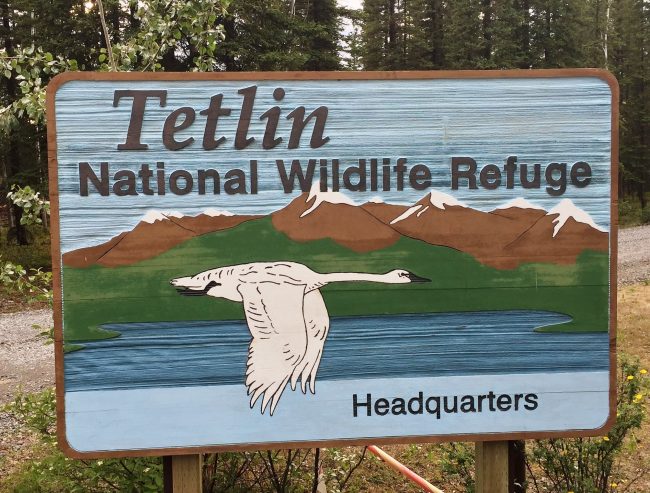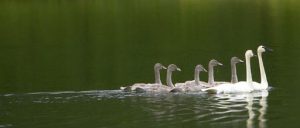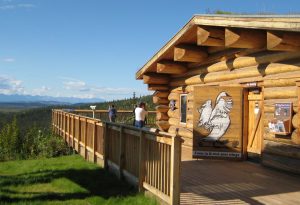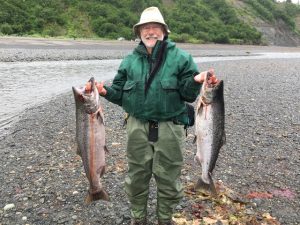By Chris Harwood, Wildlife Biologist, Kanuti National Wildlife Refuge
I’ve conducted literally thousands of songbird surveys in my almost 30 years with Alaska Refuges. On Kanuti Refuge, the listening conditions at my survey count points are typically excellent—little to no wind and, of course, no car traffic. Really, the primary aural challenge is filtering out the species and individuals I’ve already identified and counted from possibly new ones.
In the boreal forest, however, there is one natural distraction that tests my ability to concentrate during surveys (and even tries my patience!). Songbird surveys in the Interior often coincide with late incubation, hatch, or brood rearing of Lesser Yellowlegs…and nothing can ruin a songbird survey quite like a Lesser Yellowlegs vociferously defending its nearby nest or chicks.
Breeding (especially, successfully hatching) yellowlegs have little competition where alarm-calling stamina (and volume) and defensive mobbing and distraction displays are concerned. Just try and hear that distant, soft-singing Blackpoll Warbler with a yellowlegs flitting in front of your face and screaming in your ear because you’re too close to its chicks you’ll never see.
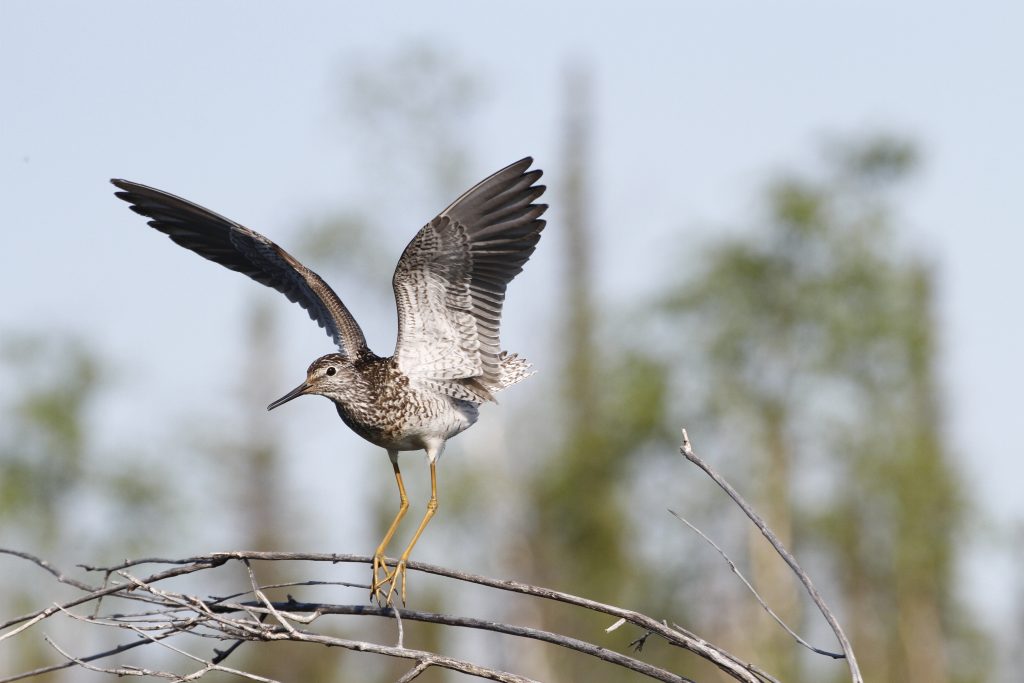
Well, it now seems that such survey distractions might be getting less common—and that’s not a good thing. The Lesser Yellowlegs population has declined by 70–80% over the past four decades across boreal North America. And it’s not just a Canadian yellowlegs problem. We believe Alaska yellowlegs are declining, too.
So, why the decline? Well, there’s a team of Alaskan and Canadian researchers who are now looking into threats to yellowlegs throughout their annual life cycle, including legal and illegal harvest in the tropics. Click here to read their report.
Through near-annual survey work from our administrative cabin along the Kanuti River, I have determined that Lesser Yellowlegs are still pretty common on a nearby study area. Given that this major yellowlegs research project lacked a study site in interior Alaska proper, I proposed that Kanuti Refuge join the boreal-wide “Yellowlegs Team” in 2018. So we purchased 10 GPS transmitters to track where some of our yellowlegs migrate and overwinter so possible threats along their annual route could be assessed.
We invited Laura McDuffie with USFWS Migratory Bird Management to the cabin in June 2019 to help us capture yellowlegs and deploy our transmitters (Laura’s M.S. thesis includes analysis of yellowlegs movements). The timing of Laura’s arrival was perfect—yellowlegs eggs started hatching that day!
We captured 13 adult yellowlegs over six exhausting days and marked them all with uniquely coded leg-flags (green with two white characters) and one blue band to denote them as “Kanuti” birds. Ten adults also received GPS transmitters. In the fall, we also contributed funding for the project’s genetics work.
Once they departed Kanuti Refuge, all but one of our 10 transmittered yellowlegs stopped initially and briefly on Yukon Flats Refuge before heading down the Central Flyway through the Great Plains of southern Canada. As of 20 August 2019, six of the yellowlegs had fanned out to points farther south, including Florida, Mexico, Cuba (2 birds), Ecuador and Peru. 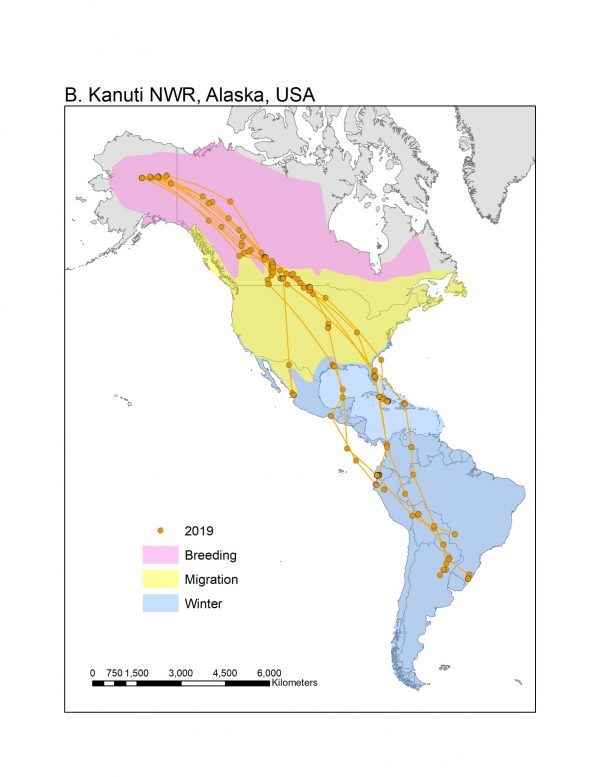
Four of the 10 transmitters were still reporting as of 1 January 2020. Two of our birds are wintering in southeastern Brazil, another in northeastern Argentina, and the fourth in western Mexico.
This spring, a field assistant and I will return to the cabin with the hope of re-sighting any of the birds marked last June. After hatch, we will also attempt to mark new birds as part of an ongoing effort to study adult survival. The Yellowlegs Team is currently assessing whether more transmitter work is needed in coming years.
Kanuti Refuge hopes to remain an integral member of this amazing continent-wide research partnership as we strive to better understand what it takes to ensure Lesser Yellowlegs remain common.

